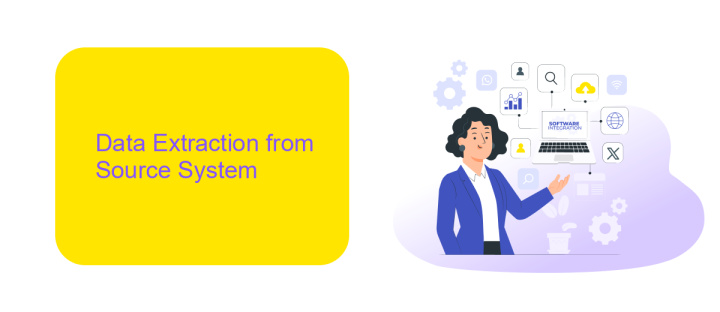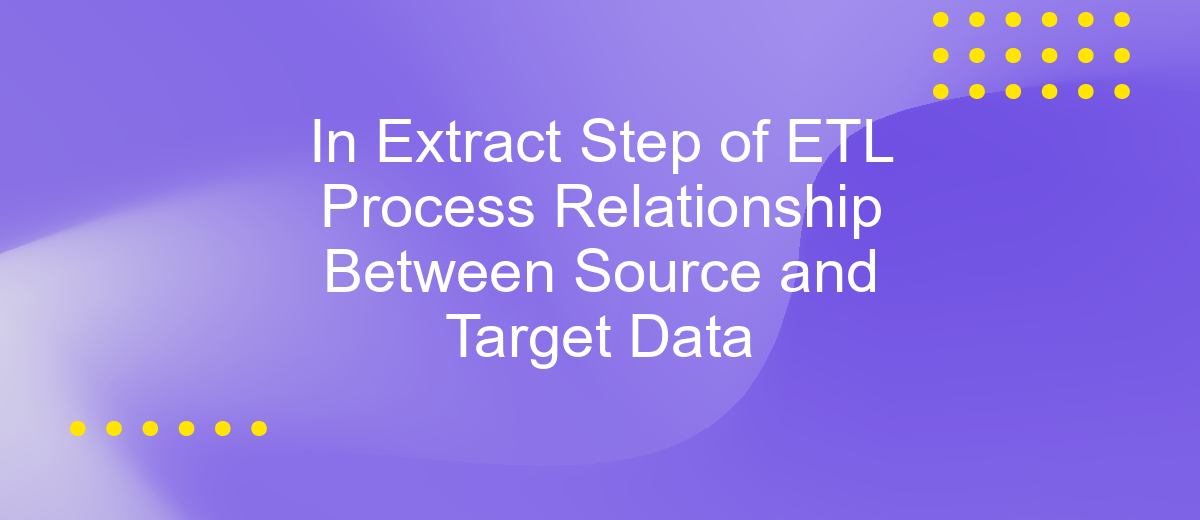In Extract Step of ETL Process Relationship Between Source and Target Data
The Extract step in the ETL (Extract, Transform, Load) process is crucial for understanding the relationship between source and target data. It involves retrieving data from various sources and preparing it for subsequent transformation and loading. This step ensures that the data is accurately and efficiently extracted, laying the foundation for successful data integration and analysis.
Introduction
In the realm of data management, the Extract, Transform, Load (ETL) process is a cornerstone for integrating and preparing data for analysis. The extract step, the first phase of ETL, involves retrieving data from various source systems and ensuring its consistency and accuracy before it is transformed and loaded into a target database. Understanding the relationship between source and target data during the extract phase is crucial for maintaining data integrity and optimizing the ETL workflow.
- Identifying and connecting to diverse data sources.
- Ensuring data consistency and accuracy.
- Handling data extraction errors and anomalies.
- Mapping source data to target structures.
Modern integration tools like ApiX-Drive provide seamless connectivity and automated workflows for extracting data from multiple sources. By leveraging such services, organizations can streamline the extract process, reduce manual intervention, and ensure that data is accurately transferred to the target systems. This not only enhances the efficiency of the ETL process but also supports better decision-making through reliable data insights.
Data Extraction from Source System

Data extraction from a source system is a critical first step in the ETL (Extract, Transform, Load) process. This phase involves retrieving data from various sources such as databases, APIs, flat files, and other data repositories. The goal is to ensure that the data is accurately and efficiently collected for further processing. The extraction process must handle various data formats and structures, ensuring that the data integrity is maintained while minimizing any disruptions to the source systems. Effective extraction techniques are crucial for the overall success of the ETL workflow.
To streamline the data extraction process, organizations often leverage integration services like ApiX-Drive. ApiX-Drive simplifies the setup of data integrations by providing a user-friendly interface and pre-built connectors to numerous data sources. This service allows users to automate the extraction process, reducing manual intervention and the risk of errors. By using ApiX-Drive, businesses can ensure a seamless and reliable data flow from the source systems to the target data warehouses or data lakes, thereby enhancing the efficiency and accuracy of their ETL processes.
Data Transformation and Mapping

Data transformation and mapping are crucial steps in the ETL (Extract, Transform, Load) process. During these stages, raw data extracted from various sources is converted into a format that is compatible with the target system. This ensures that the data is accurate, consistent, and useful for analysis and reporting purposes.
- Identify the source data and its format.
- Define the target data structure and mapping rules.
- Apply data transformation operations such as filtering, aggregation, and enrichment.
- Validate the transformed data to ensure it meets the required standards.
- Load the transformed data into the target system.
Services like ApiX-Drive can significantly simplify the data transformation and mapping process. ApiX-Drive offers seamless integration between various data sources and target systems, automating the transformation tasks and ensuring data consistency. By leveraging such tools, organizations can streamline their ETL processes, reducing manual effort and minimizing errors, ultimately leading to more reliable and timely data insights.
Data Validation and Cleansing

Data validation and cleansing are critical steps in the Extract phase of the ETL process to ensure the accuracy and integrity of the data being transferred from source to target systems. During this phase, data is meticulously examined to identify any inconsistencies, missing values, or inaccuracies that could compromise the quality of the data.
Effective data validation involves a series of checks and rules that the data must pass before it can be considered valid. This includes verifying data types, ensuring data falls within acceptable ranges, and checking for unique constraints. On the other hand, data cleansing involves correcting or removing any identified errors or inconsistencies to ensure the data is accurate and reliable.
- Data type validation
- Range checks
- Uniqueness constraints
- Missing value handling
- Data format standardization
Tools like ApiX-Drive can facilitate the data validation and cleansing process by automating these checks and corrections, providing seamless integration between different data sources and target systems. This ensures that the data extracted is clean, accurate, and ready for subsequent transformation and loading phases.
- Automate the work of an online store or landing
- Empower through integration
- Don't spend money on programmers and integrators
- Save time by automating routine tasks
Loading Transformed Data into Target System
Once the data has been transformed, the next critical step in the ETL process is loading it into the target system. This stage requires careful planning and execution to ensure data integrity and consistency. Depending on the target system, whether it is a data warehouse, database, or another storage solution, the loading process can vary significantly. It is crucial to choose the appropriate method, such as batch loading or real-time streaming, based on the specific requirements of the target system and the nature of the data being loaded.
Integrating tools like ApiX-Drive can streamline the loading process, especially when dealing with multiple data sources and complex transformations. ApiX-Drive offers a flexible and user-friendly platform for setting up automated workflows, reducing the manual effort involved in data loading. By leveraging such services, organizations can ensure that the transformed data is accurately and efficiently loaded into the target system, maintaining high data quality and enabling timely data-driven decision-making.
FAQ
What is the Extract step in the ETL process?
Why is understanding the relationship between source and target data important in the Extract step?
What are some common challenges faced during the Extract step of the ETL process?
How can automation tools help in the Extract step of the ETL process?
What best practices should be followed during the Extract step to ensure data quality?
Time is the most valuable resource in today's business realities. By eliminating the routine from work processes, you will get more opportunities to implement the most daring plans and ideas. Choose – you can continue to waste time, money and nerves on inefficient solutions, or you can use ApiX-Drive, automating work processes and achieving results with minimal investment of money, effort and human resources.


